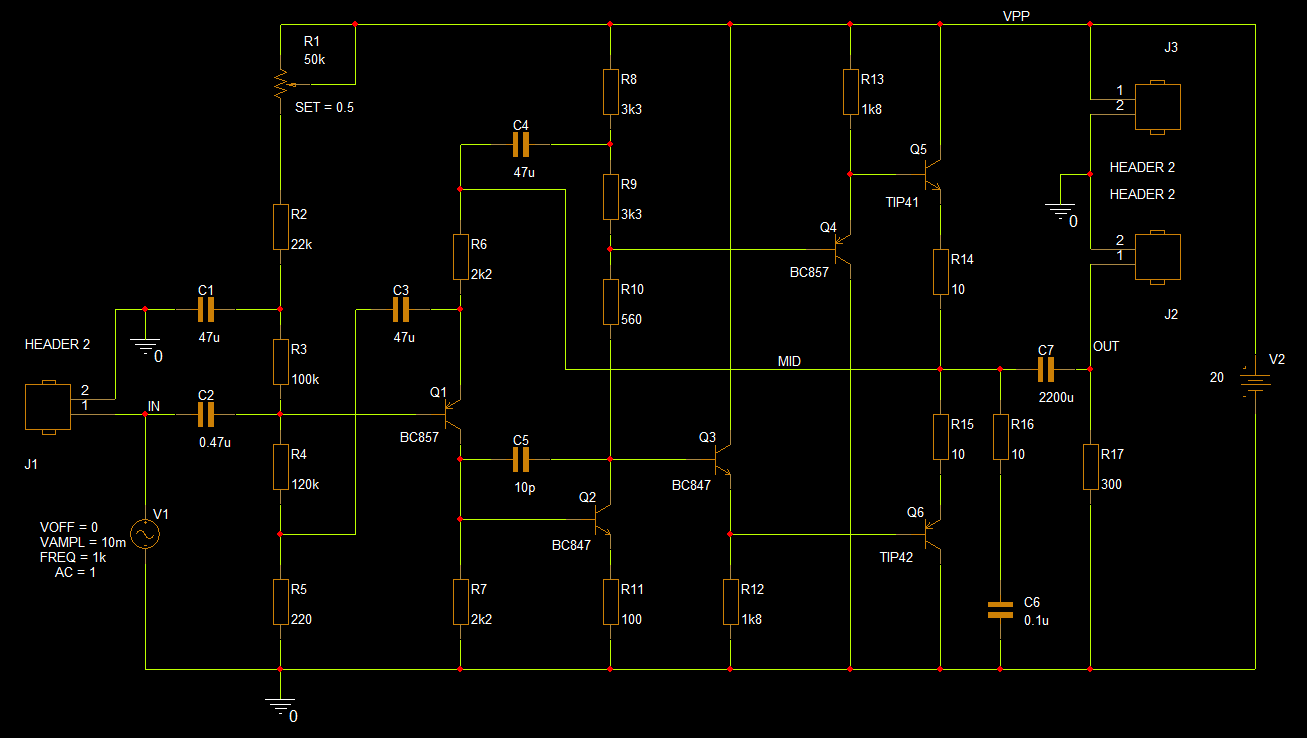Headphone Tutorial Introduction
Parallel Systems has produced a simple tutorial to help new users get an understanding of the functionality of the OrCAD software for schematic entry, circuit simulation and PCB layout.
Whilst the Cadence OrCAD and Allegro tools are designed to solve the most complex of engineering challenges, those features will not be looked at in this tutorial. It is intended to cover the fundamentals
As a consequence, this tutorial has to fit within these requirements
- it must be possible to complete with the free 30 day evaluation license OrCAD Free Trial
- it must cover the basics of OrCAD Capture, PSpice and OrCAD X Presto
- it must be simple enough for a new user
- it must only take a couple of hours to complete
- it must start from a blank schematic, simulate that circuit and end with a finished PCB design
We think we have succeeded, so please start here and work your way through.
Here is a picture of the completed circuit of the headphone amplifier example:

The circuit is shown using the CIS local database source and downloaded libraries, prepared for simulation with PSpice and with the Header connectors for PCB Layout.
Get the required data from this location: Headphone Data Download
The folder structure of the downloaded data is as follows:
Database: contains the SQLite database, DB, file and the DBC file that maps the database fields to Capture Part Properties
Library: HeadphoneAmp.olb is the Capture graphical library file for use with the local CIS database; HeadphoneAmp_Generic.olb is the library required for the steps using the PSpice generic libraries which only contains a single part; the “symbols” folder contains the files required for the PCB Footprints; the “step” folder contains STEP models for the PCB Footprints in the download; the “stepGeneric” folder contains STEP models for the PCB Footprints from the generic libraries; the PSpiceMiscLib folder contains the PSpiceMiscLib.lib which define some PSpice models that are not included in the default PSpice libraries; the PSpiceOnlineLib folder contains the HeadphoneOnline.lib file which contains PSpice models that will allow components from the online sources to be simulated.
There are three sections that cover entering the schematic, just follow one of them:
Entering the Schematic using a local CIS database A license for OrCAD Capture CIS is required: OrCAD X Capture with CIS Option, OrCAD X Standard, OrCAD X Professional, or OrCAD X Professional Plus. The OrCAD Trial licenses OrCAD X Professional Plus.
Entering the Schematic using online component sources Any license that enables OrCAD X Capture can be used to enter the schematic.
Entering the Schematic using generic libraries Any license that enables OrCAD X Capture can be used to enter the schematic.
Simulating the circuit requires a license that will enable PSpice, OrCAD X Standard, OrCAD X Professional, OrCAD X Professional Plus, OrCAD PSpice Designer or OrCAD PSpice Designer Plus.
Physical layout with OrCAD X Presto requires an OrCAD X Standard, OrCAD X Professional or OrCAD X Professional Plus license.
Note: This circuit and associated notes are provided for reference only without any assurance of practical application. Parallel Systems accepts no responsibility for the design, IP or physical products made from this design. It is intended for training purposes only.
Copyright © 2025, Parallel Systems Ltd.
All rights reserved.
